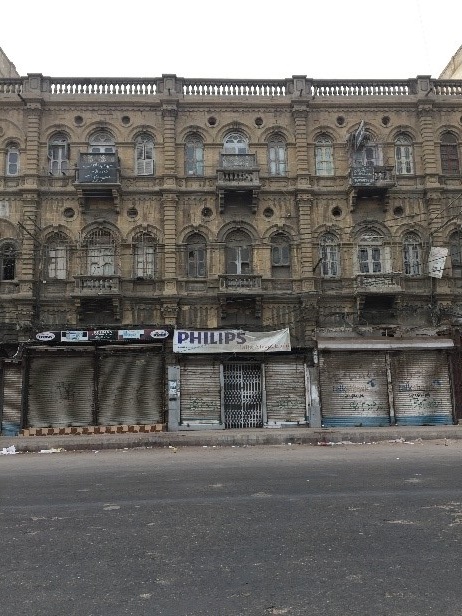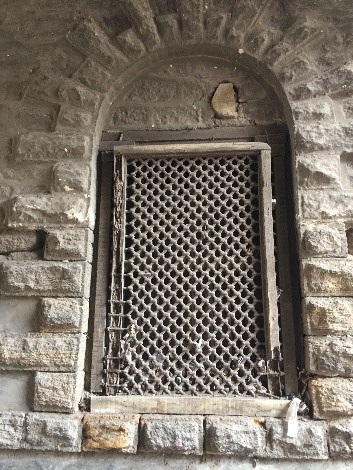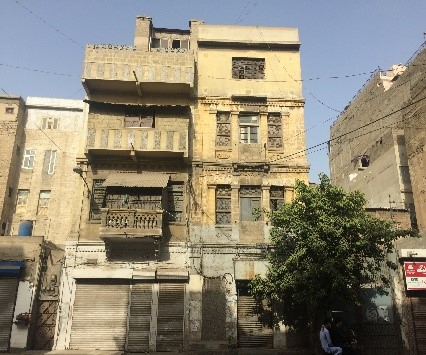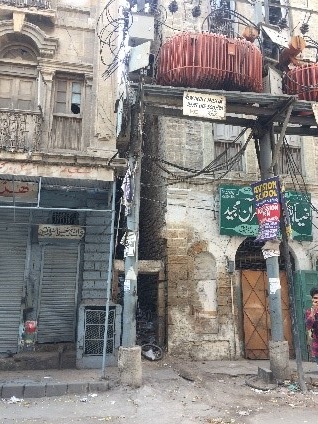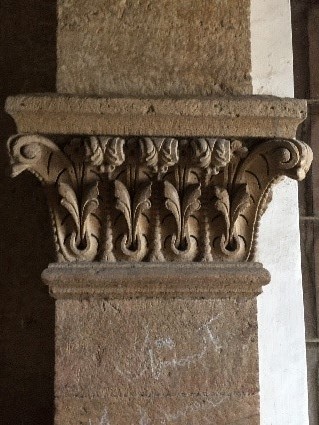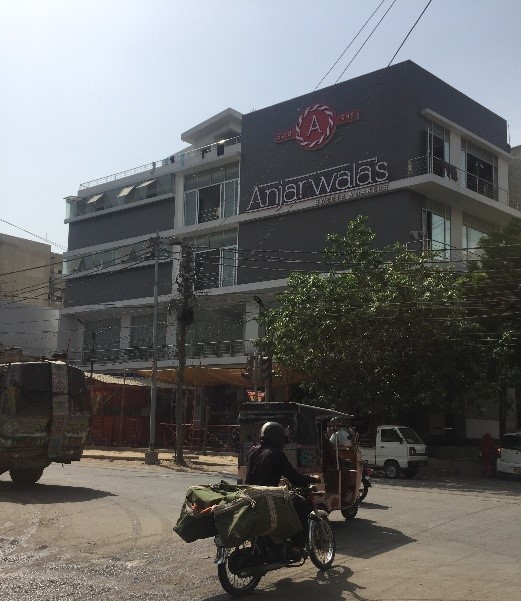Written by Insiya Huzaifa
Cedar College, Karachi
As the years have gone by, the changing political culture, disorderly planning and increase in urbanization have contributed to the area of Old Town becoming a forgotten refuge for Karachi’s heritage. There has been an evident change in the development and maintenance of infrastructure throughout this time period, some complementing the olden look and some proving to be unaesthetic to the eye. However, the overall appearance of the area has gone from being a graceful, central location to being an area demanding conservation.
As urban populations increased, it was soon realized that old city areas were not planned to adequately provide communication infrastructure, warehouses, residential expansions etc. causing people to move out to newer locations leaving Old Town in the hands of political lobbies and hence, unattended. The colonial style architecture made the area central to the cultural and social life of the city but these buildings can no longer persevere as increased commercial activities have led large areas of Old Town to become unofficial warehouses and many historic buildings have been demolished and replaced. Karachi’s inner city markets have extended from obliging to a population of four hundred and fifty thousand in 1947 to supplying a population of ten million in 1998 causing the old community organizations and establishments to come to an end.
A typical sight in that region that highlights the difference between buildings in two separate eras, is the juxtaposition of colonial style residential homes on Kutchery Road that consist of two to three stories, with the upper floors being the residence and the bottom floors being a shop, with apartment style buildings. The former were built from sandstones with some having gothic style, Hindi architectural traits shown by sturdy grills and block like structures. The apartments on the other hand reflect an urban yet poorly executed agenda to fit in small, habitable homes for the increasing population constructed with plastered, cement blocks that have a plainer look than the intricate designs on the historical buildings, most of which are left unkempt, showing us how the area has faced social degradation.
One of the sights depicting the former times is the placement of gaps between buildings to let in sunlight and ventilation. A lot of buildings are situated in such a way as to form an unintentional courtyard amongst them such as those in the New Cloth Market on M.A Jinnah Road which provides a feeling of openness, especially in the hot climate. Another trademark of the colonial era is the use of carved pillars made of sandstone as seen at Denso Hall which gives it structural beauty as they are placed in a circular fashion throughout the library. These types of pillars can also be seen at a water trough across the Qamar House. These days, unfortunately, what is left of a lot of beautiful buildings is simply the outer facade such as the Shikarpur Cloth Market. From afar, it seems to be a heritage sight whereas when you enter, you face deflation as you find it to actually be a parking lot.
There are however, buildings that have added modernization to the area such as the Anjarwala Building on Shahrah e Liaquat which itself is a franchise that has been around for decades so one would think that the bakery would fit right into the visual of Old Town. It’s dark grey colour, sliding glass windows and the cube like structures in its silhouette indeed give it an aesthetic look but when you back up and take the entire area into view, the building provides a contradictory impression when compared to the heritage buildings around it.
There is a lack of balance between moving forward in the world through urbanization and preserving our history, which if found, could bring back optimal utilization of what Old Town has to offer.


